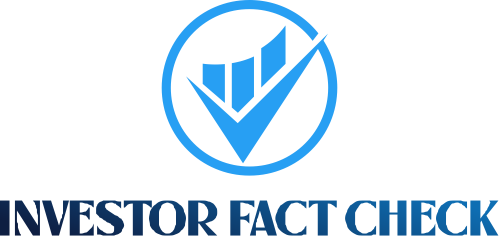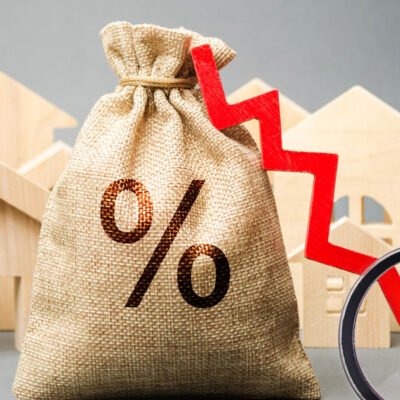Editorial Note: We earn a commission from partner links on Forbes Advisor. Commissions do not affect our editors’ opinions or evaluations.
The current average mortgage rate on a 30-year fixed mortgage is 6.27% with an APR of 6.30%, according to the Mortgage Research Center. The 15-year fixed mortgage has an average rate of 5.34% with an APR of 5.39%. On a 30-year jumbo mortgage, the average rate is 6.62% with an APR of 6.64%.

30-Year Mortgage Rates Drop 1.18%
Borrowers paid an average rate of 6.27% on a 30-year mortgage. This was down from the previous week’s rate of 6.35%.
Currently, the average APR on a 30-year fixed-rate mortgage is 6.3%. This is lower than last week when the APR was 6.38%. The APR contains both mortgage interest and the lender fees to help give a more complete picture of loan costs.
To get an idea of how much you’ll pay: a $100,000 mortgage with a 30-year fixed-rate loan at the current average interest rate of 6.27% will cost you about $617 including principal and interest (taxes and fees not included) each month, the Forbes Advisor mortgage calculator shows. That’s around $122,901 in total interest over the life of the loan.
15-Year Mortgage Rates Drop 0.41%
The average interest rate on a 15-year mortgage (fixed-rate) fell to 5.34%. This same time last week, the 15-year fixed-rate mortgage was at 5.37%.
The APR on a 15-year fixed is 5.39%. It was 5.41% this time last week.
At today’s interest rate of 5.34%, a 15-year fixed-rate mortgage would cost approximately $809 per month in principal and interest per $100,000. You would pay around $46,055 in total interest over the life of the loan.
Jumbo Mortgage Rates Drop 0.62%
The current average interest rate on a 30-year fixed-rate jumbo mortgage (a mortgage above 2025’s conforming loan limit of $806,500 in most areas) is 6.62%. Last week, the average rate was 6.67%.
If you lock in the latest rate on a 30-year, fixed-rate jumbo mortgage, you will pay $640 per month in principal and interest per $100,000 borrowed, which amounts to $130,941 in total interest over the life of the loan.
Trends in Mortgage Rates for 2025
After reaching 7.04% in January, the average interest rate for a 30-year fixed mortgage has steadily remained in the mid-to-high 6% range. The 15-year fixed mortgage rate has hovered between the low-6% and mid-to-high 5% range since its January peak of 6.27%.
Rates have trended downward since mid-January 2025, but experts aren’t forecasting further significant decreases in 2025. Rate drops may continue in 2026, especially if the Federal Reserve continues to cut the federal funds rate down.
When Will Mortgage Rates Go Down?
Mortgage rates are influenced by various economic factors, making it difficult to predict when they will drop.
Mortgage rates follow U.S. Treasury bond yields. When bond yields decrease, mortgage rates generally follow suit.
The Federal Reserve’s decisions and global events also play a key role in shaping mortgage rates. If inflation rises or the economy slows, the Fed may lower its federal funds rate. For example, during the Covid-19 pandemic, the Fed reduced rates, which drove interest rates to record lows.
A significant drop in mortgage rates seems unlikely in the near future. However, they may decline if inflation eases or the economy weakens.
How To Calculate Mortgage Payments
To get an estimate of your mortgage costs, using a mortgage calculator can help.
Simply input the following information:
- Home price
- Down payment amount
- Interest rate
- Loan term
- Taxes,insurance and any HOA fees
Find the Best Mortgage Lenders of 2025
How Are Mortgage Rates Determined?
Mortgage interest rates are determined by several factors, including some that borrowers can’t control:
- Federal Reserve. The Fed rate hikes and decreases adjust the federal funds rate, which helps determine the benchmark interest rate that banks lend money at. As a result, mortgage rates tend to move in the same direction with the Fed’s rate decision.
- Bond market. Mortgages are also loosely connected to long-term bond yields as investors look for income-producing assets—specifically, the 10-year U.S. Treasury Bond. Home loan rates tend to increase as bond prices decrease, and vice versa.
- Economic health. Rates can increase during a strong economy when consumer demand is higher and unemployment levels are lower. Anticipate lower rates as the economy weakens and there is less demand for mortgages.
- Inflation. Banks and lenders may increase rates during inflationary periods to slow the rate of inflation. Additionally, inflation makes goods and services more expensive, reducing the dollar’s purchasing power.
While the above factors set the base interest rate for new mortgages, there are several areas that borrowers can focus on to get a lower rate:
- Credit score. Applicants with a credit score of 670 or above tend to have an easier time qualifying for a better interest rate. Typically, most lenders require a minimum score of 620 to qualify for a conventional mortgage.
- Debt-to-income (DTI) ratio. Lenders may issue mortgages to borrowers with a DTI of 50% or less. However, applying with a DTI below 43% is recommended.
- Loan-to-value (LTV) ratio. Conventional home loans charge private mortgage insurance when your LTV exceeds 80% of the appraisal value, meaning you need to put at least 20% down to avoid higher rates. Additionally, FHA mortgage insurance premiums expire after the first 11 years when you put at least 10% down.
- Loan term. Longer-term loans such as a 30-year or 20-year mortgage tend to charge higher rates than a 15-year loan term. However, your monthly payment can be more affordable over a longer term.
- Residence type. Interest rates for a primary residence can be lower than a second home or an investment property. This is because the lender of your primary mortgage receives compensation first in the event of foreclosure.
Find the Best Mortgage Lenders of 2025
Frequently Asked Questions (FAQs)
How do you get a lower mortgage interest rate?
Comparing lenders and loan programs is an excellent start. Borrowers should also strive for a good or excellent credit score between 670 and 850 and a debt-to-income ratio of 43% or less.
Further, making a minimum down payment of 20% on a conventional mortgage can help you automatically waive private mortgage insurance premiums, which increases your borrowing costs. Buying discount points or lender credits can also reduce your interest rate.
How often do mortgage rates change?
Lenders adjust mortgage rates daily based on economic conditions, inflation, bond market movements and Federal Reserve actions.
If you’re shopping around for a mortgage, remember that you might be able to lock in a rate for 30 up to 120 days, depending on the lender. Note that some lenders charge a fee to lock your rate while others offer the service for free.
Should I choose a fixed- or adjustable-rate mortgage?
Choosing between a fixed- or adjustable-rate mortgage (ARM) depends on your financial situation. A fixed-rate mortgage suits those who want consistent monthly payments throughout the loan term without worrying about fluctuations in their rate or payments in response to market changes. If mortgage rates are low, securing a fixed rate can save you money in the long run.
An ARM, on the other hand, may appeal to those who want a lower initial rate and monthly payment. However, you also run the risk of ending up with higher payments if your rate fluctuates. If you expect your income to rise, you may feel confident handling these potential payment increases. These mortgages can also work well for those who plan to live in a home for only a few years, as you might sell or move before the rate adjusts.





